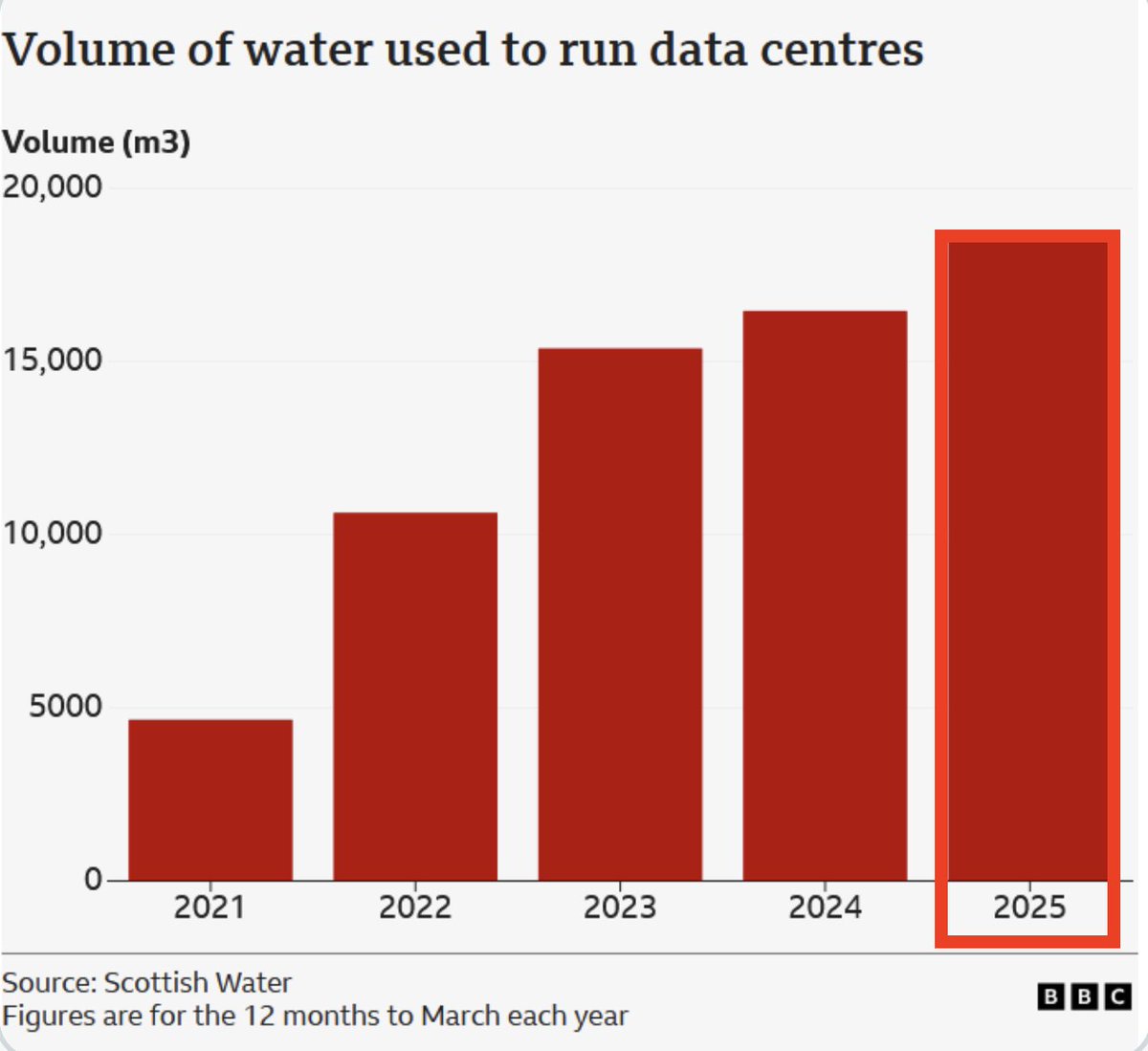
Data centres in Scotland used about 4,500 cubic meters of water in 2021 but by 2025, that number had exploded to over 18,000. That’s a fourfold jump in just four years. It sounds like a lot, and it is but to really understand why it matters, you have to look at what’s driving it and how it ripples across everything from local communities to global sustainability efforts.
The reason behind this surge is pretty straightforward, AI. Modern artificial intelligence runs on massive clusters of GPUs and advanced chips that pump out enormous heat. To keep them from frying, data centres use water based cooling systems because water moves heat away faster than air. As companies rush to build bigger hyperscale centres optimized for AI, each new site adds more racks, more power, and more heat to remove. And that means more waterBut heres where it gets complicated. These water hungry facilities often sit near towns, farms, or fragile ecosystems. Pulling tens of thousands of cubic meters of freshwater every year can strain local water supplies especially during dry months. That’s water that could otherwise be used for drinking, irrigation, or sustaining rivers and wildlife. When the used water flows back, it’s often warmer, which can harm fish and other aquatic life. Over time this tension between tech growth and community needs can spark serious environmental and political debates.Now, you might think, “Aren’t cooling systems getting more efficient?” They are but the problem is that growth is outpacing innovation. Even if each server rack uses less water than before, the number of racks keeps climbing. Some companies are exploring recycled or non potable water systems, but those come with their own challenges like added treatment costs and infrastructure upgrades.So what does this all mean moving forward? Three big things. First, regulators are likely to step in, treating data centres more like heavy industries expect reporting rules, stricter usage limits, and maybe even water-use fines. Second, investors are starting to pay attention. ESG-minded funds already track carbon footprints, and water risk is quickly joining that list. Operators who build responsibly, disclose their data, and invest in sustainable cooling could win more capital and public support. And third, this pressure could actually fuel innovation pushing companies to develop new cooling methods like liquid-immersion systems or technologies that reuse waste heat to warm nearby buildings.Source: StockMarket.News
The copyright of this article belongs to the original author/organization.
The views expressed herein are solely those of the author and do not reflect the stance of the platform. The content is intended for investment reference purposes only and shall not be considered as investment advice. Please contact us if you have any questions or suggestions regarding the content services provided by the platform.


